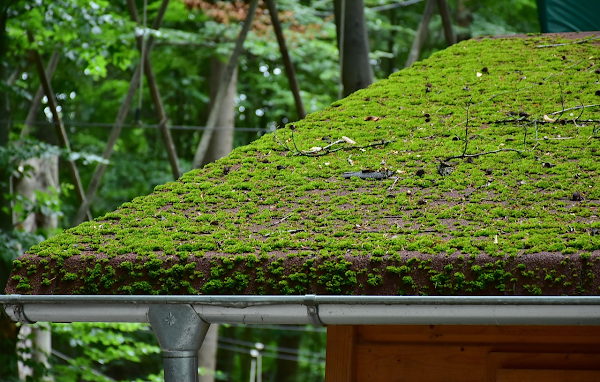Key Signs Your Roof Is Due for an Upgrade
The roof is a crucial component of any home, providing protection against environmental elements and contributing significantly to the overall structure's integrity. It is a silent guardian, shielding us from severe weather conditions, and its importance cannot be overstressed. Yet, roofs are often overlooked in home maintenance checks until severe issues become apparent. According to the National Roofing Contractors Association, most roofs last between 20 to 30 years, but factors such as climate, materials, and maintenance can significantly influence this lifespan. It is estimated that nearly $46 billion is spent annually on roof repairs and replacements in the United States, indicating the widespread need for ongoing roof attention. Hence, recognizing the key signs that your roof may be due for an upgrade is integral to maintaining a safe and secure home.
Age of the Roof
As a rule of thumb, if your roof is more than 20 years old, it might be time for a replacement. This is subject to the material of the roof and the climatic conditions. Now, changing a couple of shingles due to their age or condition can be a fun little DIY project. However, changing the entirety of the roof, especially the one that is old, can be a little tricky. Hence, hiring professional services, whether those from SundanceKBE.com or other reputable companies, is always a wise decision. The roof age is crucial because it reflects the state of the underlying structure and materials. With time, roofs become more susceptible to damage due to wear and tear, making them less efficient in protecting homes.
Shingle Granules in the Gutters
If your gutters are accumulating more shingle granules than usual, it might be a sign that your roof is deteriorating. Shingle granules are tiny, sand-like particles that cover shingles and protect them from environmental damage. With time, these granules wear off due to exposure to sunlight and harsh weather conditions. If you see an excessive amount of shingle granules in your gutters, it could mean that your roof is reaching the end of its lifespan. When the roof loses its granules, it becomes less effective in protecting your home and can lead to further damage.
Sagging Roof
A sagging roof, especially in the roof valleys and dips, is a serious sign of roof damage. Typically, sagging occurs when there is a structural issue with the underlying roof support. This could be due to insufficient support or damage caused by water penetration. Regardless of the cause, a sagging roof is a clear indication that your roof requires immediate attention and potential replacement. From the interior of your home, you can also look for signs like cracked or peeling paint, which could point toward a sagging roof. For example, if you see that the paint on your ceiling is cracked or peeling in a specific area, it could indicate water damage caused by a sagging roof.
Visible Light
If you can see sunlight from your attic, it indicates that there may be holes in your roof. This is particularly concerning because it not only allows water and debris to enter your home, but it also means that your roof is no longer providing proper insulation. This can result in higher energy bills due to heat loss or gain, depending on the season. Therefore, if you notice visible light coming from your attic, it's essential to have a professional inspect your roof for potential issues. Furthermore, visible light can also indicate that your shingles are no longer providing adequate coverage, which could lead to further damage and a need for roof replacement.
Shingle Issues
Look out for curled, buckling, or missing shingles. These are clear indicators of a worn-out roof. Shingles are the individual pieces that cover the roof, and when they start to show signs of deterioration, it can lead to various problems. For example, curled shingles can trap moisture and debris, which can cause mold growth and rotting of underlying structures. Similarly, buckling shingles can leave gaps in your roof, exposing it to harsh weather conditions. If you see missing shingles, it can be an indication of potential water damage, as the roof is no longer fully covered. Moreover, cracked or damaged shingles can also indicate that your roof has reached the end of its lifespan and requires a replacement.
Water Damage and High Electricity Bills
Having your roof leaking and causing water damage is one of the most apparent signs that it is time for a roof upgrade. Look out for stains on your ceiling or walls, as well as any dampness or mold growth. These are all clear indications that your roof is no longer able to protect your home from moisture and environmental elements. Moreover, if you've noticed a significant increase in your electricity bills, it could be due to a poorly insulated roof. This means that your roof is no longer keeping the heat or cold out, and as a result, your HVAC system has to work harder, leading to higher energy bills.
In conclusion, recognizing the key signs that your roof is due for an upgrade can save you from extensive and costly repairs in the future. Stay proactive in monitoring the age, condition, and performance of your roof to ensure it continues to provide proper protection for your home. Don't ignore any potential signs or hesitate to consult a professional if you have concerns about the state of your roof. Remember, investing in a new roof now can save you from potentially more significant expenses and headaches down the line. So, be attentive to your roof's needs and make sure it continues to keep you safe and dry for years to come.








No comments
Thank you for dropping by! I would love to hear what you thought. :)
Thanks!
♥,
Diana